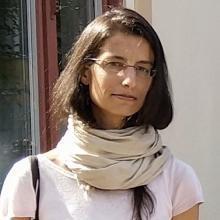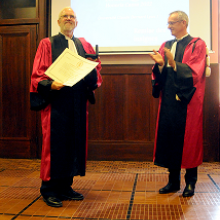Bioinformatics, Phylogeny and Evolutionary Genomics Group
Members
Maîtresse de conférences
UCBL
Tel: 04 72 44 84 87

Professeure des universités
UCBL
Tel: 33 04 26 23 44 76
Doctorante
UCBL
Enseignant-chercheur CPJ
UCBL

Directeur de recherche
CNRS
Tel: 33 04 72 44 62 97

Professeur d'université émérite
UCBL
Tel: 04 72 44 85 60
Ingénieur d'études CDD
CNRS

Directeur de recherche
CNRS
Tel: 33 04 72 43 11 67

Maîtresse de conférences
UCBL
Tel: 33 04 72 43 29 18
Doctorante
UCBL

Chargée de recherche
CNRS
Tel: 33 04 72 44 85 60

Directeur de recherche
CNRS
Tel: 04 72 44 84 87

Chargée de recherche
CNRS
Tel: 04 72 43 13 44

Directeur de recherche
CNRS

Maître de conférences
UCBL
Tel: 04 72 43 35 83

Chargée de recherche
CNRS
Tel: 04 72 44 81 42
Doctorant
CNRS

Directeur de recherche
CNRS
Tel: 33 04 72 44 62 96

Chargée de recherche
CNRS
Tel: 04 72 43 26 28
Doctorant
UCBL

Chercheur invité
UCBL
Our group focuses on two main axes: phylogenomics (i.e. the inference of evolutionary history based on genomics data) and evolutionary genomics (understanding the molecular and population processes that drive genome evolution). We see genomes both as a subject of research (how do genomes evolve, why are they structured the way they are?), but also as a main source of empirical knowledge about the macroevolutionary patterns (what do they tell us about the history of life on Earth?), or about the phenotypes and life-history strategies of organisms. Our works heavily rely on methodological developments (bioinformatics, modeling and statistical inference).
Evolution of genome architecture and expression
Genomes are the result of a long-term evolutionary process, shaped by multiple evolutionary forces. Some genomic features are adaptive (i.e. are beneficial for the fitness of organisms), others result from non-adaptive processes (random drift and biased gene conversion - BGC) or are caused by conflicts between multiple levels of selection (e.g. meiotic drive or the spread of selfish genetic elements). We explore different aspects of genome architecture (base composition landscapes, genome structure and size, impact of transposable elements, …) or functioning (gene expression, lncRNAs, epigenetic landscapes, …), and try to disentangle the relative contribution of adaptive and non-adaptive processes to their evolution. For this purpose, we consider both the molecular mechanisms (mutation, repair, recombination) and the population processes (selection, drift, BGC, …) that shape genetic variation.
Phylogenomics
We are interested in reconstructing the history of life on Earth. This research unfolds along several axes. First, we develop phylogenomic databases of aligned genetic sequences (e.g. BIBI, RiboDB or HOGENOM). Second, we conduct methodological research on how to accurately reconstruct deep phylogenies, infer divergence times, reconstruct ancestral genetic sequences, gene repertoires and life-history traits. This methodological work is translated into publicly available software programs (e.g. SeaView, PhyloBayes, Coevol). Finally, we apply these approaches to several important problems, among which: reconstructing the phylogeny of animals, of archaea, or the global tree of life; using phylogenies and ancestral gene repertoires to investigate the evolution of complex systems and the emergence of molecular and cellular functions in the three domains of life; reconstructing ancestral genetic sequences, a research activity that has industrial and biotechnological applications.
Teaching and outreach
We teach at University Lyon 1 (Master Bioinfo@Lyon), INSA, ENS Lyon, we organize bioinformatics internships. We regularly give conferences on evolution (tree of life, human evolution, genetic diversity, …).
Prospective students and postdocs are invited to apply, as we often welcome visitors for internships or research projects.
Keywords: Molecular evolution and Population Genomics; Phylogenomics; Computational Genomics; Comparative genomics; Bioinformatics; Statistical inference.
Publications
Display of 571 to 600 publications on 1110 in total
Characteristics of a phylogenetically ambiguous, arsenic-oxidizing Thiomonas sp., Thiomonas arsenitoxydans strain 3As(T) sp. nov.
Archives of Microbiology . 193 : 439-449
Journal article
see the publicationPhylogenetic and genetic variation among Fe(II)-oxidizing acidithiobacilli supports the view that these comprise multiple species with different ferrous iron oxidation pathways
Microbiology . 155 : 111-122
Journal article
see the publicationAn oxygen reduction chain in the hyperthermophilic anaerobe Thermotoga maritima highlights horizontal gene transfer between Thermococcales and Thermotogales
Environmental Microbiology . 13 : 2132-45
Journal article
see the publicationComparative analysis of transposable elements in the melanogaster subgroup sequenced genomes.
Gene . 473 ( 2 ) : 100-9
Journal article
see the publicationCharacterization of heterotrophic prokaryote subgroups in the Sfax coastal solar salterns by combining flow cytometry cell sorting and phylogenetic analysis
Extremophiles . 15 : 347-358
Journal article
see the publicationSpecificity shifts in the rRNA and tRNA nucleotide targets of archaeal and bacterial m5U methyltransferases.
RNA . 17 ( 1 ) : 45-53
DOI: 10.1261/rna.2323411
Journal article
see the publicationComparative high-throughput transcriptome sequencing and development of SiESTa, the \textitSilene EST annotation database
BMC Genomics . 12 : 1-11
Journal article
see the publicationAn efficient method to find potentially universal population genetic markers applied to metazoans
BMC Evolutionary Biology . 10 ( 276 ) : 1-17
Journal article
see the publicationGenetic perspectives on forager-farmer interaction in the Luangwa Valley of Zambia
American Journal of Physical Anthropology . 141 ( 3 ) : 382-394
DOI: 10.1002/ajpa.21155
Journal article
see the publicationConservation of Neutral Substitution Rate and Substitutional Asymmetries in Mammalian Genes
Genome Biology and Evolution . 2 : 19-28
DOI: 10.1093/gbe/evp056
Journal article
see the publicationMolecular evolution of genes in avian genomes
Genome Biology . 11 ( 6 ) : 17 p.
Journal article
see the publicationIn the heartland of Eurasia: the multilocus genetic landscape of Central Asian populations
European Journal of Human Genetics .
Journal article
see the publicationMode de vie et diversité génétique dans les populations humaines d'Asie Centrale
Thesis
see the publicationFrequency of the AGT Pro11Leu polymorphism in humans: Does diet matter?
Annals of Human Genetics . 74 ( 1 ) : 57-64
Journal article
see the publicationLooking for signatures of sex-specific demography and local adaptation on the X chromosome.
Genome Biology . 11 ( 1 ) : 203
Journal article
see the publicationEvolution Moléculaire
Biologie évolutive . 978-2-8041-0161-9 : 114-173
Book chapter
see the publicationParamecium tetraurelia: The Renaissance of an Early Unicellular Model
Emerging Model Organisms . 2010(1) : 1-55
Journal article
see the publicationGene expression in a paleopolyploid: a transcriptome resource for the ciliate Paramecium tetraurelia.
BMC Genomics . 11 ( 1 ) : 547
Journal article
see the publicationConcepts et méthodes en phylogénie moléculaire
Springer . 978-2-287-99047-2
Book
see the publicationConcepts et méchodes en phylogénie moléculaire
incollection . -- : 63-65
Journal article
see the publicationDetecting lateral gene transfers by statistical reconciliation of phylogenetic forests
BMC Bioinformatics . 11 ( 324 ) : 13
Journal article
see the publicationSpecies identification of staphylococci by amplification and sequencing of the gene compared to the gene and by matrix-assisted laser desorption ionization time-of-flight mass spectrometry
European Journal of Clinical Microbiology and Infectious Diseases . : 343-354
Journal article
see the publicationBiosynthesis of wyosine derivatives in tRNA: an ancient and highly diverse pathway in Archaea.
Molecular Biology and Evolution . 27 ( 9 ) : 2062-77
Journal article
see the publicationThe Pseudomonas aeruginosa patatin-like protein PlpD is the archetype of a novel Type V secretion system
Environmental Microbiology . 12 ( 6 ) : 1498-512
Journal article
see the publicationAN INTEGRATIVE TEST OF THE DEAD-END HYPOTHESIS OF SELFING EVOLUTION IN TRITICEAE (POACEAE)
Evolution - International Journal of Organic Evolution . 64 ( 10 ) : no - no
Journal article
see the publicationStatistical Potentials for Improved Structurally Constrained Evolutionary Models
Molecular Biology and Evolution . 27 ( 7 ) : 1546 - 1560
Journal article
see the publicationGenes devoid of full-length transposable element insertions are involved in development and in the regulation of transcription in human and closely related species.
Journal of Molecular Evolution . 71 ( 3 ) : 180-91
Journal article
see the publicationDetecting positive selection within genomes: the problem of biased gene conversion
Philosophical Transactions of the Royal Society B: Biological Sciences . 365 ( 1552 ) : 2571-2580
Journal article
see the publicationParamecium tetraurelia: The Renaissance of an Early Unicellular Model
Emerging Model Organisms . 2010 : 1-55
Journal article
see the publication
